Quantitative Model Study of the Psychological Recovery Benefit of Landscape Environment Based on Eye Movement Tracking Technology
Abstract
1. Introduction
2. Materials and Methods
2.1. Study Area
2.2. Participants
2.3. Stimuli
2.4. Measurement Tools
2.5. Experimental Design
2.6. Experimental Procedure
2.7. Statistical Analysis
3. Results
3.1. Visualization Results of the Eye Movement Data
3.2. Correlation Analysis between Eye Movement Index and Landscape Recovery Benefit
3.3. Quantitative Evaluation Model of Landscape Resilience
4. Discussion
4.1. Individual Attention Areas and Characteristics of Elements for Different Types of Landscapes
4.2. Characteristics of Landscape Mental Recovery
4.3. Quantitative Evaluation Model of Landscape Restoration and Its Application
4.4. Design Suggestions for Landscape Restoration Benefit Improvement
5. Conclusions
Author Contributions
Funding
Institutional Review Board Statement
Informed Consent Statement
Data Availability Statement
Acknowledgments
Conflicts of Interest
References
- Gramaglia, C.; Gattoni, E.; Gambaro, E.; Bellan, M.; Balbo, P.E.; Baricich, A.; Sainaghi, P.P.; Pirisi, M.; Binda, V.; Feggi, A.; et al. Anxiety, Stress and Depression in COVID-19 Survivors from an Italian Cohort of Hospitalized Patients: Results From a 1-Year Follow-Up. Front. Psychiatry 2022, 13, 862651. [Google Scholar] [CrossRef]
- Perry, A.; Cheesman, A.D.; McIvor, J.; Chalton, R. A British experience of surgical voice restoration techniques as a secondary procedure following total laryngectomy. J. Laryngol. Otol. 1987, 101, 155–163. [Google Scholar] [CrossRef]
- Meli, P.; Schweizer, D.; Brancalion, P.H.S.; Murcia, C.; Guariguata, M.R. Multidimensional training among Latin America’s restoration professionals. Restor. Ecol. 2019, 27, 477–484. [Google Scholar] [CrossRef]
- Narita, Z.; Yamanouchi, Y.; Mishima, K.; Kamio, Y.; Ayabe, N.; Kakei, R.; Kim, Y. Training types associated with knowledge and experience in public health workers. Arch. Public Health 2022, 80, 44. [Google Scholar] [CrossRef]
- Michalczuk, J.; Michalczuk, M. Rural parks as refugia of cavity nesters in an agricultural landscape: Which habitat features are important for cavity dwellers? Landsc. Urban Plan. 2022, 223, 104407. [Google Scholar] [CrossRef]
- Riechers, M.; Henkel, W.; Engbers, M.; Fischer, J. Stories of Favourite Places in Public Spaces: Emotional Responses to Landscape Change. Sustainability 2019, 11, 3851. [Google Scholar] [CrossRef]
- Schweitzer, R.D.; Glab, H.; Brymer, E. The Human-Nature Experience: A Phenomenological-Psychoanalytic Perspective. Front. Psychol. 2018, 9, 969. [Google Scholar] [CrossRef]
- Li, J.; Nassauer, J.I. Technology in support of nature-based solutions requires understanding everyday experiences. Ecol. Soc. 2021, 26, 35. [Google Scholar] [CrossRef]
- Ulrich, R.S. View through a window may influence recovery from surgery. Science 1984, 224, 420–421. [Google Scholar] [CrossRef]
- Spielhofer, R.; Thrash, T.; Hayek, U.W.; Gret-Regamey, A.; Salak, B.; Grubel, J.; Schinazi, V.R. Physiological and behavioral reactions to renewable energy systems in various landscape types. Renew. Sustain. Energy Rev. 2021, 135, 110410. [Google Scholar] [CrossRef]
- Orudjev, N.Y.; Lempert, M.B.; Osaulenko, I.; Salnikova, N.A.; Kuzmichev, A.A.; Kravets, A.G. Computer—Based Visual Analysis of Ecology Influence on Human Mental Health. In Proceedings of the 7th International Conference on Information, Intelligence, Systems & Applications (IISA), Chalkidiki, Greece, 13–15 July 2016. [Google Scholar]
- Tveit, M.; Ode, A.; Fry, G. Key concepts in a framework for analysing visual landscape character. Landsc. Res. 2006, 31, 229–255. [Google Scholar] [CrossRef]
- Wu, T.; Fawzy, A.; Akenroye, A.; Keet, C.A.; Rosas, I.O.; Hansel, N.N.; Hanania, N.A.; McCormack, M.C. Metformin Use and Risk of Asthma Exacerbation: A Retrospective Electronic Health Record Cohort Study. Am. J. Respir. Crit. Care Med. 2021, 203, A1435. [Google Scholar]
- Zhao, J.; Tang, T.; Wang, X. Effects of landscape composition on mosquito population in urban green spaces. Urban For. Urban Green. 2020, 49, 126626. [Google Scholar] [CrossRef]
- Guo, L.-N.; Zhao, R.-L.; Ren, A.-H.; Niu, L.-X.; Zhang, Y.-L. Stress Recovery of Campus Street Trees as Visual Stimuli on Graduate Students in Autumn. Int. J. Environ. Res. Public Health 2020, 17, 148. [Google Scholar] [CrossRef]
- Wu, Y.; Zhuo, Z.; Liu, Q.; Yu, K.; Huang, Q.; Liu, J. The Relationships between Perceived Design Intensity, Preference, Restorativeness and Eye Movements in Designed Urban Green Space. Int. J. Environ. Res. Public Health 2021, 18, 10944. [Google Scholar] [CrossRef]
- Liu, Q.; Zhang, Y.; Lin, Y.; You, D.; Zhang, W.; Huang, Q.; van den Bosch, C.C.K.; Lan, S. The relationship between self-rated naturalness of university green space and students’ restoration and health. Urban For. Urban Green. 2018, 34, 259–268. [Google Scholar] [CrossRef]
- Liu, Q.; Wu, Y.; Xiao, Y.; Fu, W.; Zhuo, Z.; van den Bosch, C.C.K.; Huang, Q.; Lan, S. More meaningful, more restorative? Linking local landscape characteristics and place attachment to restorative perceptions of urban park visitors. Landsc. Urban Plan. 2020, 197, 103763. [Google Scholar] [CrossRef]
- Payne, S.R.; Bruce, N. Exploring the Relationship between Urban Quiet Areas and Perceived Restorative Benefits. Int. J. Environ. Res. Public Health 2019, 16, 1611. [Google Scholar] [CrossRef]
- Evans, T.M.; Bira, L.; Gastelum, J.B.; Weiss, L.T.; Vanderford, N.L. Evidence for a mental health crisis in graduate education. Nat. Biotechnol. 2018, 36, 282–284. [Google Scholar] [CrossRef]
- Gao, T.; Liang, H.; Chen, Y.; Qiu, L. Comparisons of Landscape Preferences through Three Different Perceptual Approaches. Int. J. Environ. Res. Public Health 2019, 16, 4754. [Google Scholar] [CrossRef]
- Zhang, S.; Zhao, X.; Zeng, Z.; Qiu, X. The Influence of Audio-Visual Interactions on Psychological Responses of Young People in Urban Green Areas: A Case Study in Two Parks in China. Int. J. Environ. Res. Public Health 2019, 16, 1845. [Google Scholar] [CrossRef] [PubMed]
- Harezlak, K.; Blasiak, M.; Kasprowski, P. Biometric Identification Based on Eye Movement Dynamic Features. Sensors 2021, 21, 6020. [Google Scholar] [CrossRef] [PubMed]
- Kodkin, V.L.; Artem’eva, E.V. Digital Identification of the Human Condition as a Prerequisite for the Effectiveness of the Organizational Automation (Biocybernetic) Systems Operation. Sensors 2022, 22, 3649. [Google Scholar] [CrossRef] [PubMed]
- Gao, Y.; Sun, X.M.; Zhang, T.; Zhan, H. Analysis on the characteristics of eye movement and the evaluation of psychological perception for forest waterscape space. In Proceedings of the 2nd International Conference on Advances in Civil and Ecological Engineering Research (ACEER), Electr Network, Beijing, China, 20–23 October 2020. [Google Scholar]
- Jeon, J.Y.; Jo, H.I. Effects of audio-visual interactions on soundscape and landscape perception and their influence on satisfaction with the urban environment. Build. Environ. 2020, 169, 106544. [Google Scholar] [CrossRef]
- Fu, E.; Ren, Y.; Li, X.; Zhang, L. Research on the Healing Potential of Rural Community Streets from the Perspective of Audiovisual Integration: A Case Study of Four Rural Communities in China. Front. Public Health 2022, 10, 861072. [Google Scholar] [CrossRef]
- John, B.; Jorg, S.; Koppal, S.; Jain, E. The Security-Utility Trade-off for Iris Authentication and Eye Animation for Social Virtual Avatars. IEEE Trans. Vis. Comput. Graph. 2020, 26, 1880–1890. [Google Scholar] [CrossRef]
- Xu, X.; Wu, H. Audio-visual interactions enhance soundscape perception in China’s protected areas. Urban For. Urban Green. 2021, 61, 127090. [Google Scholar] [CrossRef]
- Zhang, H.; Qiu, M.; Li, L.; Lu, Y.; Zhang, J. Exploring the dimensions of everyday soundscapes perception in spatiotemporal view: A qualitative approach. Appl. Acoust. 2021, 181, 108149. [Google Scholar] [CrossRef]
- Deng, L.; Kang, J.; Zhao, W.; Jambrosic, K. Cross-National Comparison of Soundscape in Urban Public Open Spaces between China and Croatia. Appl. Sci. 2020, 10, 960. [Google Scholar] [CrossRef]
- Li, X.; Li, L.; Wang, X.; Lin, Q.; Wu, D.; Dong, Y.; Han, S. Visual quality evaluation model of an urban river landscape based on random forest. Ecol. Indic. 2021, 133, 108381. [Google Scholar] [CrossRef]
- Nhu-Tai, D.; Tram-Tran, N.-Q.; Kim, S.-H. Affective Expression Analysis in-the-wild using Multi-Task Temporal Statistical Deep Learning Model. In Proceedings of the 15th IEEE International Conference on Automatic Face and Gesture Recognition (FG), Buenos Aires, Argentina, 16–20 November 2020; pp. 624–628. [Google Scholar]
- Lee, J.H.; Ostwald, M.J. Fractal Dimension Calculation and Visual Attention Simulation: Assessing the Visual Character of an Architectural Facade. Buildings 2021, 11, 163. [Google Scholar] [CrossRef]
- Tho, S.W.; Yeung, Y.Y.; Wei, R.; Chan, K.W.; So, W.W.-m. A Systematic Review of Remote Laboratory Work in Science Education with the Support of Visualizing its Structure through the HistCite and CiteSpace Software. Int. J. Sci. Math. Educ. 2017, 15, 1217–1236. [Google Scholar] [CrossRef]
- Reed, J.; Barlow, J.; Carmenta, R.; van Vianen, J.; Sunderland, T. Engaging multiple stakeholders to reconcile climate, conservation and development objectives in tropical landscapes. Biol. Conserv. 2019, 238, 108229. [Google Scholar] [CrossRef]
- Dupont, L.; Antrop, M.; Van Eetvelde, V. Eye-tracking Analysis in Landscape Perception Research: Influence of Photograph Properties and Landscape Characteristics. Landsc. Res. 2014, 39, 417–432. [Google Scholar] [CrossRef]
- Eroglu, E.; Muderrisoglu, H.; Kesim, G.A. The Effect of Seasonal Change of Plants Compositions on Visual Perception. J. Environ. Eng. Landsc. Manag. 2012, 20, 196–205. [Google Scholar] [CrossRef]
- Fang, Z.; Zhang, Y.; Yang, Y.; Zhou, X.; Zheng, Z. Experimental investigation of standard effective temperature (SET*) adapted for human walking in an indoor and transitional thermal environment. Sci. Total Environ. 2021, 793, 148421. [Google Scholar] [CrossRef]
- Adeyanju, S.; O’Connor, A.; Addoah, T.; Bayala, E.; Djoudi, H.; Moombe, K.; Reed, J.; Ros-Tonen, M.; Siangulube, F.; Sikanwe, A.; et al. Learning from Community-Based Natural Resource Management (CBNRM) in Ghana and Zambia: Lessons for integrated landscape approaches. Int. For. Rev. 2021, 23, 273–297. [Google Scholar] [CrossRef]
- Annerstedt, M.; Jonsson, P.; Wallergard, M.; Johansson, G.; Karlson, B.; Grahn, P.; Hansen, A.M.; Wahrborg, P. Inducing physiological stress recovery with sounds of nature in a virtual reality forest—Results from a pilot study. Physiol. Behav. 2013, 118, 240–250. [Google Scholar] [CrossRef]
- Smyrnakis, I.; Andreadakis, V.; Rina, A.; Boufachrentin, N.; Aslanides, I.M. Silent versus Reading Out Loud modes: An eye-tracking study. J. Eye Mov. Res. 2021, 14. [Google Scholar] [CrossRef]
- Cooper, M.B.; Daglish, H.N.; Adams, J.A. Reader preference for report typefaces. Appl. Ergon. 1979, 10, 66–70. [Google Scholar] [CrossRef]
- Opdam, P. Implementing human health as a landscape service in collaborative landscape approaches. Landsc. Urban Plan. 2020, 199, 103819. [Google Scholar] [CrossRef]
- Ma, B.; Hauer, R.J.; Xu, C.; Li, W. Visualizing evaluation model of human perceptions and characteristic indicators of landscape visual quality in urban green spaces by using nomograms. Urban For. Urban Green. 2021, 65, 127314. [Google Scholar] [CrossRef]
- Spielhofer, R.; Hunziker, M.; Kienast, F.; Hayek, U.W.; Gret-Regamey, A. Does rated visual landscape quality match visual features? An analysis for renewable energy landscapes. Landsc. Urban Plan. 2021, 209, 104000. [Google Scholar] [CrossRef]
- Hassan, D.K.; Hewidy, M.; El Fayoumi, M.A. Productive urban landscape: Exploring urban agriculture multi-functionality practices to approach genuine quality of life in gated communities in Greater Cairo Region. Ain Shams Eng. J. 2022, 13, 101607. [Google Scholar] [CrossRef]
- Krzeptowska-Moszkowicz, I.; Moszkowicz, L.; Porada, K. Urban Sensory Gardens with Aromatic Herbs in the Light of Climate Change: Therapeutic Potential and Memory-Dependent Smell Impact on Human Wellbeing. Land 2022, 11, 760. [Google Scholar] [CrossRef]
- Sargentis, G.F.; Dimitriadis, P.; Ioannidis, R.; Iliopoulou, T.; Koutsoyiannis, D. Stochastic Evaluation of Landscapes Transformed by Renewable Energy Installations and Civil Works. Energies 2019, 12, 2817. [Google Scholar] [CrossRef]
- Rodrigues, M.; Montanes, C.; Fueyo, N. A method for the assessment of the visual impact caused by the large-scale deployment of renewable-energy facilities. Environ. Impact Assess. Rev. 2010, 30, 240–246. [Google Scholar] [CrossRef]
- Wolsink, M. Co-production in distributed generation: Renewable energy and creating space for fitting infrastructure within landscapes. Landsc. Res. 2018, 43, 542–561. [Google Scholar] [CrossRef]
- Hofer, T.; Sunak, Y.; Siddique, H.; Madlener, R. Wind farm siting using a spatial Analytic Hierarchy Process approach: A case study of the Stadteregion Aachen. Appl. Energy 2016, 163, 222–243. [Google Scholar] [CrossRef]
- Alvarsson, J.J.; Wiens, S.; Nilsson, M.E. Stress Recovery during Exposure to Nature Sound and Environmental Noise. Int. J. Environ. Res. Public Health 2010, 7, 1036–1046. [Google Scholar] [CrossRef]
- Lin, Z.; Wang, Y.; Ye, X.; Wan, Y.; Lu, T.; Han, Y. Effects of Low-Carbon Visualizations in Landscape Design Based on Virtual Eye-Movement Behavior Preference. Land 2022, 11, 782. [Google Scholar] [CrossRef]
- Sun, L.; Shao, H.; Li, S.; Huang, X.; Yang, W. Integrated Application of Eye Movement Analysis and Beauty Estimation in the Visual Landscape Quality Estimation of Urban Waterfront Park. Int. J. Pattern Recognit. Artif. Intell. 2018, 32, 1856010. [Google Scholar] [CrossRef]
- Chen, R.; Gao, Y.; Zhang, R.; Zhang, Z.; Zhang, W.; Meng, H.; Zhang, T. How Does the Experience of Forest Recreation Spaces in Different Seasons Affect the Physical and Mental Recovery of Users? Int. J. Environ. Res. Public Health 2023, 20, 2357. [Google Scholar] [CrossRef] [PubMed]
- van Everdingen, C.; Peerenboom, P.B.; van der Velden, K.; Delespaul, P. Vital Needs of Dutch Homeless Service Users: Responsiveness of Local Services in the Light of Health Equity. Int. J. Environ. Res. Public Health 2023, 20, 2546. [Google Scholar] [CrossRef]
- Masullo, M.; Cioffi, F.; Li, J.; Maffei, L.; Ciampi, G.; Sibilio, S.; Scorpio, M. Urban Park Lighting Quality Perception: An Immersive Virtual Reality Experiment. Sustainability 2023, 15, 2069. [Google Scholar] [CrossRef]
- Mei, Y.; Xu, L.; Li, Z. Study on Emotional Perception of Hangzhou West Lake Scenic Area in Spring under the Influence of Meteorological Environment. Int. J. Environ. Res. Public Health 2023, 20, 1905. [Google Scholar] [CrossRef]
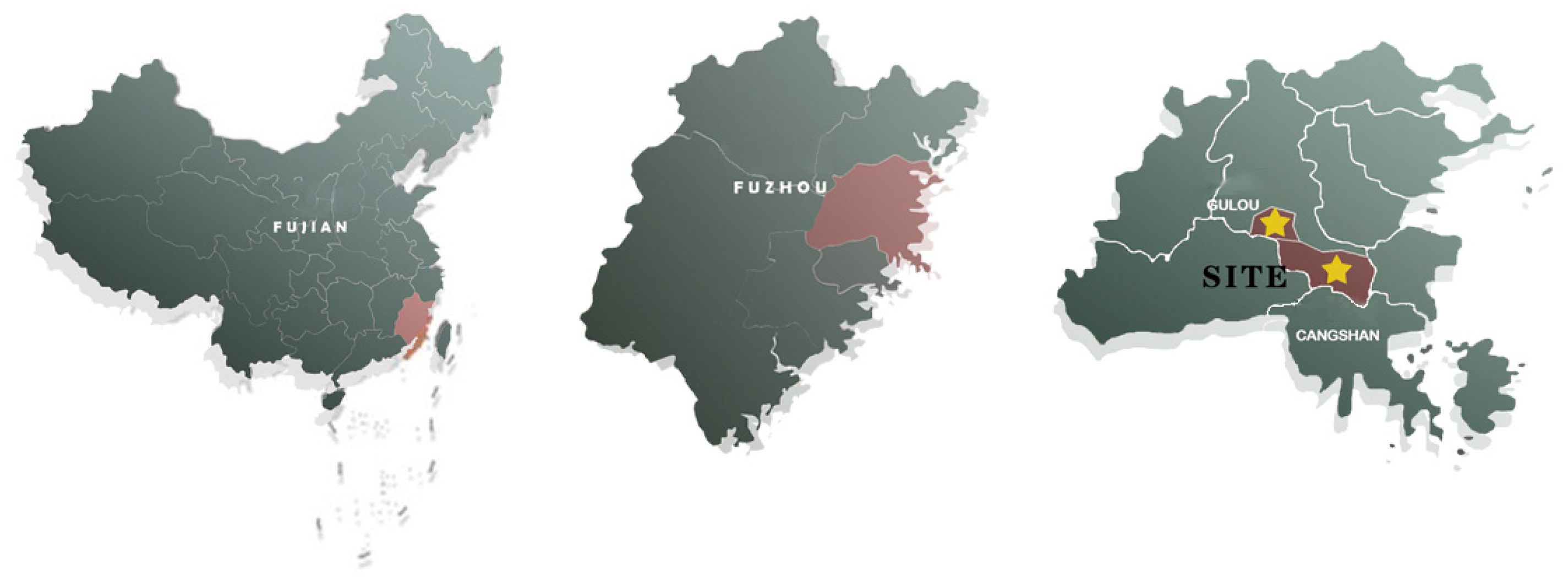

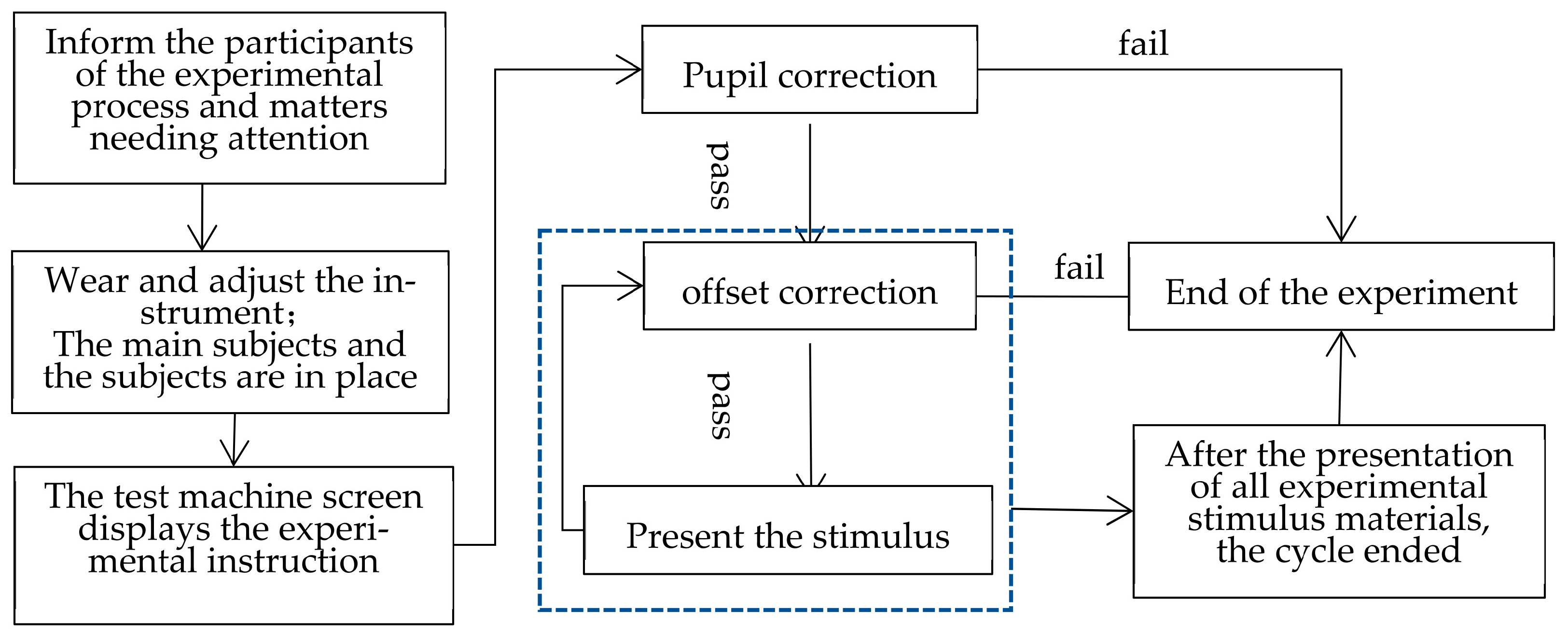
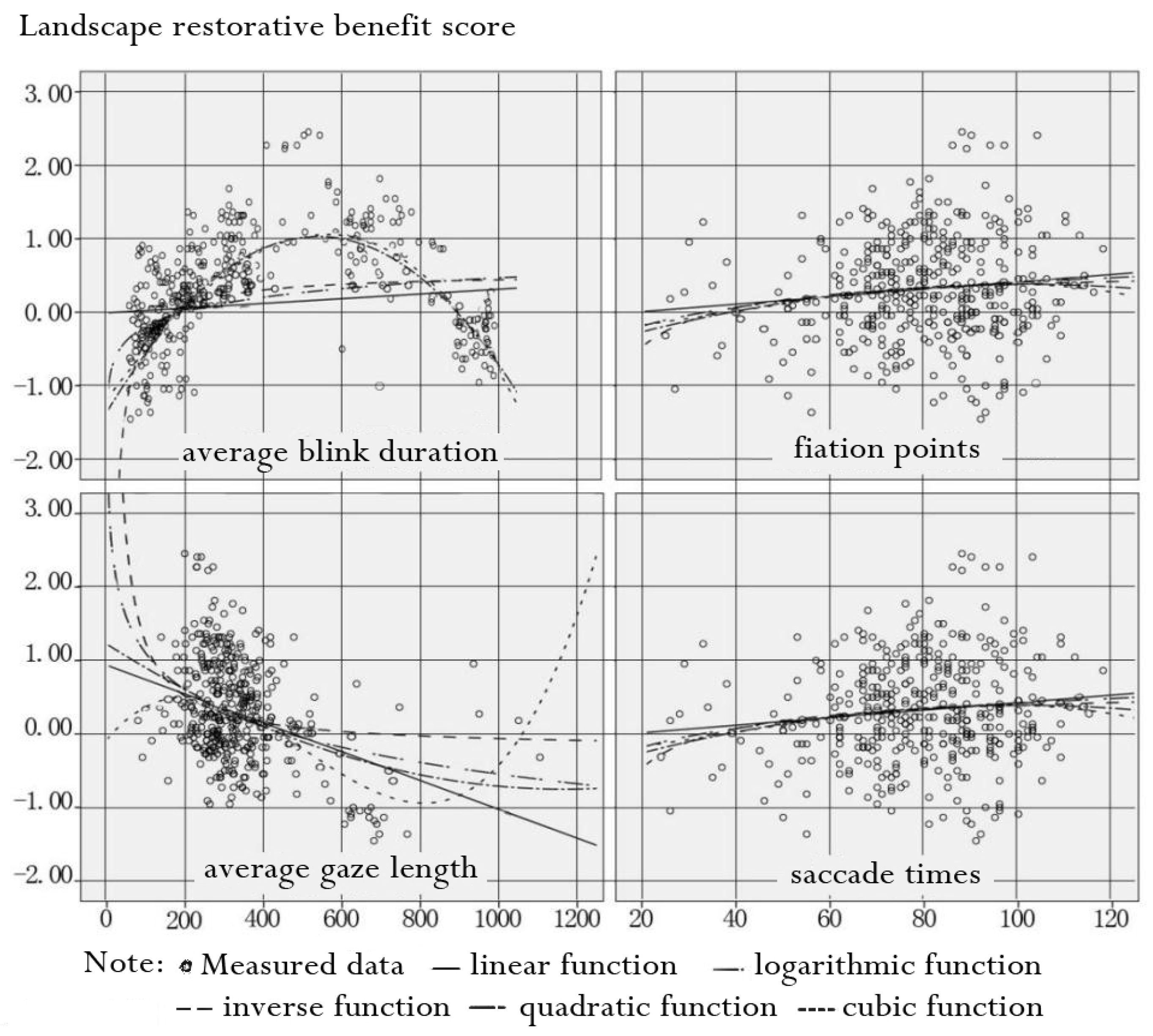
| Green Space Name | Proportion | Features |
|---|---|---|
| Xihu Park | 42.50 hm2 | Located in Gulou District, Fuzhou city, it was built in 1914 and is a comprehensive urban park. It is the most complete classical garden in Fuzhou, with many historical and cultural sites preserved. |
| Zuohai Park | 35.47 hm2 | Located in Gulou District, Fuzhou city, it was first built in 1990 and is a comprehensive urban park. The overall design is “Five continents scenery” as the theme, and the Japanese garden reflects the characteristics of the Japanese courtyard. |
| Nanjiangbin Flower Sea Park | 27.40 hm2 | Located in South Jiangbin Avenue, Fuzhou city, it was first built in 2013 and is a special park. It is famous for its super-large flower sea, integrating leisure, viewing, ecology, and fitness in one. |
| Minjiang Park | 74.01 hm2 | Located in Jiangjiangxi Avenue, Fuzhou city, it was first built in 2000 and is a comprehensive urban park. The north garden has the unique cultural characteristics of the Minjiang River basin, and the south garden has relatively few traces of artificial carving. |
| Jinji Mountain Park | 110.00 hm2 | Located at the foot of Jinji Mountain in Jin’an District, Fuzhou, it was first built in 1997 and is a comprehensive urban park. There are many places of interest in the park, beautiful natural scenery, and strong cultural heritage. |
| Fu Road Park | Total loop length: 19 km | Fu Road is arranged along the ridge line of Jinniu Mountain, connecting the Zuohai plank road around the lake in the northeast, connecting the Minjiang River in the southwest, and running through the five parks in Fuzhou, connecting more than a dozen natural and cultural landscapes. |
| Landscape Type | Green Landscape | Blue Landscape | Gray Landscape | Blue and Green Landscape | Gray and Green Landscape | Gray and Blue Landscape | Blue, Green, and Gray Landscape |
|---|---|---|---|---|---|---|---|
| Elements constitute | green landscape elements | blue landscape elements | gray landscape elements | green and blue landscape elements | green and gray landscape elements | blue and gray landscape elements | green, blue, and gray landscape elements |
| Group | Green Landscape | Gray and Green Landscape | Blue and Green Landscape | Blue, Green and Gray Landscape |
|---|---|---|---|---|
| 1 |  | 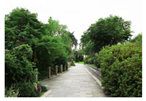 |  | 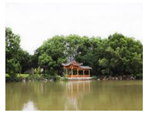 |
| 2 | 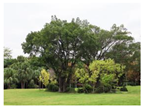 | 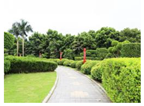 | 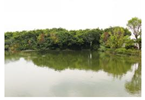 | 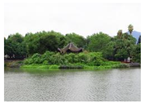 |
| 3 |  | 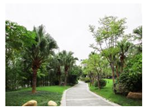 | 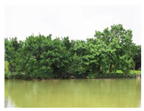 | 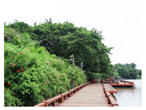 |
| 4 | 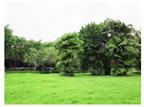 | .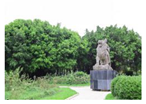 | 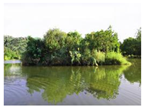 | 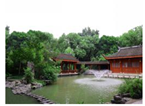 |
| Green Landscape | Gray and Green Landscape | Blue and Green Landscape | Blue, Green, and Gray Landscape | |
|---|---|---|---|---|
| thermal maps | 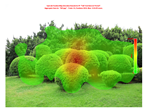 | 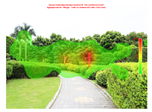 | 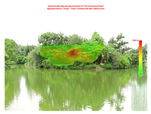 | 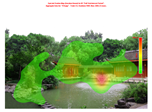 |
| Title 1 | Green Landscape | Gray and Green Landscape | Blue and Green Landscape | Blue, Green, and Gray Landscape |
|---|---|---|---|---|
| Landscape composition elements complexity | Level 1 | Level 2 | Level 2 | Level 3 |
| Area of interest | Level 4 | Level 2 | Level 1 | Level 3 |
| regularities of distribution | Centralized distribution of areas of interest Centralized distribution of interest elements | Centralized distribution of areas of interest Distal distribution of elements of interest | Centralized distribution of areas of interest Centralized distribution of interest elements | Distal distribution of regions of interest Distal distribution of elements of interest |
| Interest elements | Focus on the artificial modeling plant landscape in the landscape area, with no significant element characteristics | The dispersion is concentrated in the brightly colored structures and at the end of the road | Focus on the plant landscape elements in the picture area, with no significant element features | Spread is concentrated in dynamic water features, water steps, and colorful buildings |
| Metric 1 | Metric 2 | Metric 3 | Metric 4 | Metric 5 | Metric 6 | Metric 7 | ||
|---|---|---|---|---|---|---|---|---|
| Recovery grade | pearson correlation | 0.133 ** | −0.366 ** | −0.051 | 0.038 | 0.117 * | 0.120 * | −0.024 |
| significance (double-tail) | 0.008 | <0.001 | 0.305 | 0.444 | 0.019 | 0.016 | 0.638 | |
| the number of cases | 400 | 400 | 400 | 400 | 400 | 400 | 400 | |
| Variable | Model Summary | Parameter Estimates | ||||||||
|---|---|---|---|---|---|---|---|---|---|---|
| Function | R2 | F | df1 | df2 | Sig | Constant | b1 | b2 | b3 | |
| Recovery benefit score and average blink duration index | linear | 0.018 | 7.157 | 1 | 398 | 0.008 | 0.184 | <0.001 | / | / |
| logarithmic | 0.097 | 42.558 | 1 | 398 | <0.001 | −1.273 | 0.277 | / | / | |
| inverse | 0.175 | 84.478 | 1 | 398 | <0.001 | 0.706 | −88.958 | / | / | |
| quadratic | 0.549 | 241.271 | 2 | 397 | <0.001 | −1.128 | 0.009 | −7.926 × 10−6 | / | |
| cubic | 0.552 | 162.630 | 3 | 396 | <0.001 | −0.956 | 0.007 | −3.928 × 10−6 | −2.567 × 10−9 | |
| Recovery benefit score and average gaze length index | linear | 0.134 | 61.582 | 1 | 398 | <0.001 | 0.956 | −0.002 | / | / |
| logarithmic | 0.117 | 52.697 | 1 | 398 | <0.001 | 4.347 | −0.701 | / | / | |
| inverse | 0.061 | 25.927 | 1 | 398 | <0.001 | −0.166 | 141.830 | / | / | |
| quadratic | 0.140 | 32.313 | 2 | 397 | <0.001 | 1.239 | −0.003 | 1.414 × 10−6 | / | |
| cubic | 0.177 | 28.297 | 3 | 396 | <0.001 | −0.039 | 0.006 | −1.901 × 10−5 | 1.249 × 10−8 | |
| Recovery benefit score and gaze point number index | linear | 0.014 | 5.565 | 1 | 398 | 0.019 | −0.092 | 0.005 | / | / |
| logarithmic | 0.016 | 6.280 | 1 | 398 | 0.013 | −1.291 | 0.368 | / | / | |
| inverse | 0.015 | 6.091 | 1 | 398 | 0.014 | 0.593 | −21.322 | / | / | |
| quadratic | 0.017 | 3.462 | 2 | 397 | 0.032 | −0.626 | 0.020 | −9.899 × 10−5 | / | |
| cubic | 0.017 | 2.335 | 3 | 396 | 0.073 | −0.303 | 0.004 | 0.000 | −1.065 × 10−6 | |
| Recovery benefit score and saccade number index | linear | 0.014 | 5.803 | 1 | 398 | 0.016 | −0.096 | 0.005 | / | / |
| logarithmic | 0.016 | 6.554 | 1 | 398 | 0.011 | −1.299 | 0.370 | / | / | |
| inverse | 0.016 | 6.358 | 1 | 398 | 0.012 | 0.594 | −21.141 | / | / | |
| quadratic | 0.018 | 3.605 | 2 | 397 | 0.028 | −0.630 | 0.020 | <0.001 | / | |
| cubic | 0.018 | 2.430 | 3 | 396 | 0.065 | −0.321 | 0.005 | <0.001 | −1.054 × 10−6 | |
Disclaimer/Publisher’s Note: The statements, opinions and data contained in all publications are solely those of the individual author(s) and contributor(s) and not of MDPI and/or the editor(s). MDPI and/or the editor(s) disclaim responsibility for any injury to people or property resulting from any ideas, methods, instructions or products referred to in the content. |
© 2023 by the authors. Licensee MDPI, Basel, Switzerland. This article is an open access article distributed under the terms and conditions of the Creative Commons Attribution (CC BY) license (https://creativecommons.org/licenses/by/4.0/).
Share and Cite
Fei, X.; Zhang, Y.; Kong, D.; Huang, Q.; Wang, M.; Dong, J. Quantitative Model Study of the Psychological Recovery Benefit of Landscape Environment Based on Eye Movement Tracking Technology. Sustainability 2023, 15, 11250. https://doi.org/10.3390/su151411250
Fei X, Zhang Y, Kong D, Huang Q, Wang M, Dong J. Quantitative Model Study of the Psychological Recovery Benefit of Landscape Environment Based on Eye Movement Tracking Technology. Sustainability. 2023; 15(14):11250. https://doi.org/10.3390/su151411250
Chicago/Turabian StyleFei, Xinhui, Yanqin Zhang, Deyi Kong, Qitang Huang, Minhua Wang, and Jianwen Dong. 2023. "Quantitative Model Study of the Psychological Recovery Benefit of Landscape Environment Based on Eye Movement Tracking Technology" Sustainability 15, no. 14: 11250. https://doi.org/10.3390/su151411250
APA StyleFei, X., Zhang, Y., Kong, D., Huang, Q., Wang, M., & Dong, J. (2023). Quantitative Model Study of the Psychological Recovery Benefit of Landscape Environment Based on Eye Movement Tracking Technology. Sustainability, 15(14), 11250. https://doi.org/10.3390/su151411250






